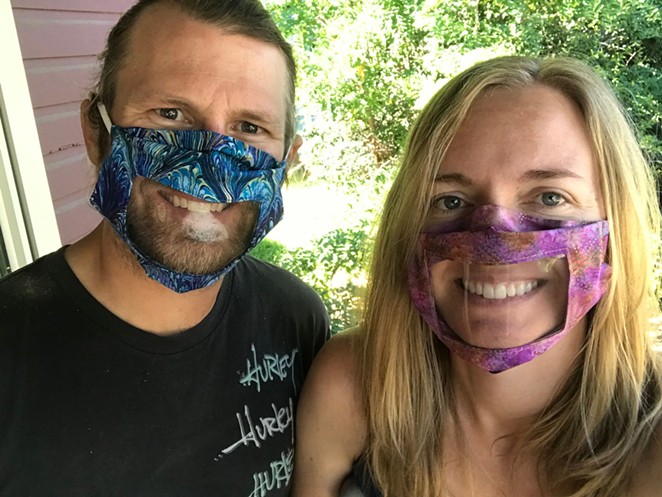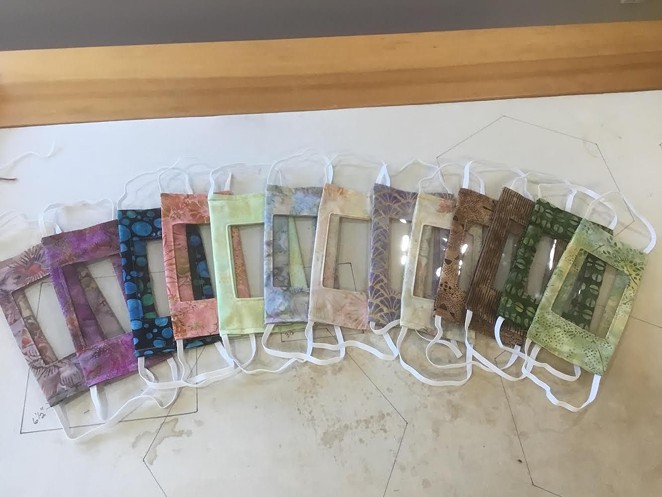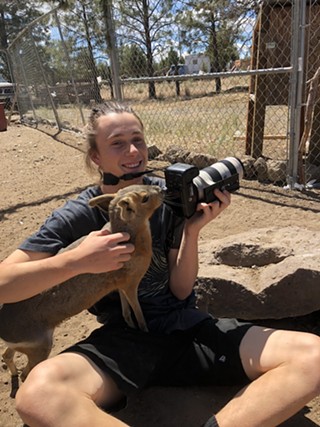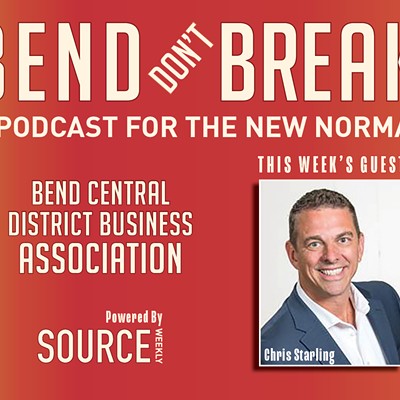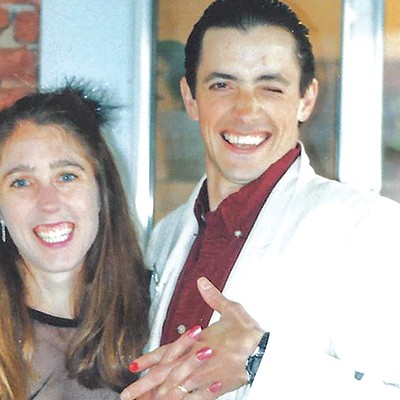To many, masks are just necessary, perhaps annoying, items—a mere article of clothing required to exist in the COVID-19 world. For many, forgetting a mask at home or engaging in an argument over the mask itself is the only issue the face-fabric poses. However, for the 2.8% of Oregonians who are deaf or hard of hearing, masks pose hundreds of issues that are impacting almost every aspect of their day to day lives.
Jerick D. Haynes is the co-owner of Fusion Fitness in Bend. His left ear is completely deaf, while his right ear contains a cochlear implant.
“For me, I do about 75 to 80% understanding though lip reading. I usually match facial expressions and their lips to the muffled sounds I’m hearing so I can best understand people. Now, with masks, all lip reading is being taken away. The masks also affect the sound coming out of people’s mouths. People are quieter, and the sounds are harder to understand because they’re speaking through a barrier of fabric."
Danielle Morley of Prineville has total loss of hearing in her right ear and deteriorating loss of hearing in her left.
“I work in a fast food restaurant. Bean and meat sound the same to me. But if I am able to see a person's lips, I can tell which one they mean when seeing the lips make either the B or M movement."
Issues like this present themselves everywhere. “Increasingly, my life is becoming harder due to masks. Appointments, going shopping, my job, everywhere, I’m now having to reminding people I’m hard of hearing,” Morley explained.
For the hard-of-hearing and deaf community, mouths also work to signal when someone is beginning to talk. “One of the things hearing people don’t understand is when you come up and talk to us, often the only times we realize you're talking to us is we see your mouth moving.” Haynes explained, “If you’re standing right next to me, your mouth is moving, there's no one around, although I can't hear you, obviously you must be talking to me, and I must respond. Now, when I'm in line and someone's striking up small talk at the grocery store, I don’t notice someone talking to me at all. On top of that when I get in front of the line, I cannot understand anything the cashier is saying, nor see when she’s beginning to talk."“Now I wear a tee shirt that says, ‘I am Deaf’. It is not really pleasant having to broadcast my disability, but I have no other option.” — Mishael Greenwald
tweet this
In the case of Mishael Greenwald, a retired Oregon nurse who identifies as a bilaterally deaf, grocery shopping has become one of the stressful events of the week. “The other day I was rammed in the hip by a shopper who I can only assume was standing behind me asking me to move. When I turned around to see who rammed me the person was glaring at me with angry eyes. Now I wear a t-shirt that says, ‘I am Deaf.’ It is not really pleasant having to broadcast my disability, but I have no other option.”
For the 6 million people in the U.S. who are hard of hearing or experience deafness, masks aren't the only problem the pandemic is posing. With at least the first six weeks of school taking the form of remote learning, Greenwald explained that virtual classroom work is a nightmare for a deaf or hard-of-hearing student. “I’d like to see captions available on Zoom for many of their students and parents in order for the deaf community to be included."
However, on the other side of things, integrating back into classrooms means more masks— which can also pose issues. “Administration is looking to have me wear masks in my preschool," said Shannon Gregory a mother whose daughter is hard of hearing, “My daughter who is three and deaf in one ear is still learning language. Everything I say is muffled to her and she has started saying, 'what mommy?’ where before she tended to hear me pretty good through her one working ear. At a point in her life where she is acquiring language, this is very frustrating."
Early in March as masks began showing up in hospitals, the misunderstandings caused by masks to the deaf and hard-of-hearing community became much more dire. To combat communication errors within the medical field, Greenwald teamed up with the Association of Medical Professionals with Hearing Losses to develop a mask that allowed for lip reading. What came out of it is an FDA-approved mask, labeled “The Communicator,” which has a strip of clear plastic at the mouth, allowing to people to read lips.
Greenwald acknowledged the alternative, when a Communicator mask isn’t available. “Although it might help deaf people understand better, I would not recommend pulling down your mask to speak in this pandemic situation,” and Haynes added, “Although the face shields make my life a lot easier for me I don’t personally recommend them because I feel they have too much airflow under the shield.”
So, if the mask must stay on, what’s the best option? "Be aware of the people around you.” Morley answered, “If you see someone struggling to understand another person due to hearing, step in and help. You might be just what is needed.”
Haynes added, “The thing is, deaf people look like normal people. Between the deaf community of Central Oregon and the elderly community of Central Oregon, there are a lot of individuals having troubles hearing. Just be a little more assertive and try to put a little more volume into your mask.”

